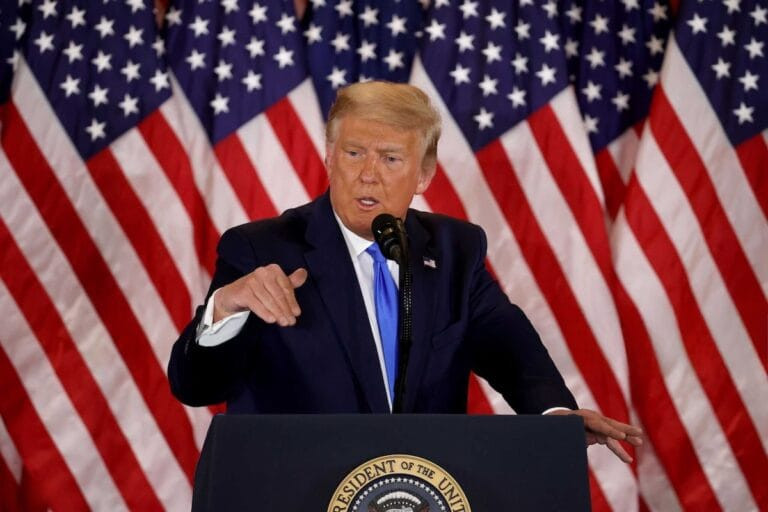Following through on promises to increase US tariffs on Canada and Mexico as soon as possible, President Trump used the International Emergency Economic Powers Act (IEEPA) to apply 25% tariffs on all goods from Canada and Mexico – which accounted for nearly $900B and 28% of total US imports in 2023 – starting February 4th, with the exception of energy imports which will face a 10% tariff.
A 10% tariff will also be applied to all imports from China. President Trump cited the flow of illegal immigrants and drugs – especially fentanyl – as urgent threats to the nation and as the basis for enacting the IEEPA, which can only be used in response to a national emergency.
Becoming the first president to use the IEEPA to increase tariffs, the act allowed Trump to take immediate action by executive order as opposed to the various acts he used to increase tariffs during his first administration which activate federal agencies to research, review and make recommendations on tariffs first, and can take several months.
Beyond Increased Tariffs
The executive orders for tariffs on Canada and Mexico also go beyond just the tariffs:
● The orders disallow exemptions to the tariffs – despite intense lobbying by automotive and energy groups
● Aware of potential retaliation (more on that below), the orders also include clauses allowing the president to increase tariffs further if Canada or Mexico apply retaliatory tariffs
The de minimis exemption, which permits imports under $800 without duties, is also being eliminated for all goods from these two countries. Details of the new China tariff, including whether the White House is closing de minimis for Chinese imports, have not been released yet but changes to de minimis for Chinese goods seems likely at some 1 point soon in any case given the US Custom and Border Protection (CBP) January 17th announcement
● The orders also eliminate duty drawbacks, through which importers can request the duties to be returned to them if they ultimately export the finished goods or destroy them, for the new tariffs from Mexico and Canada..
● Finally, the orders state that the tariffs will remain in effect until the governments of Canada and Mexico have “taken adequate steps to alleviate” these crises through cooperative enforcement actions.
Nor does it appear that the tariffs will end here. The president implied that he would take more trade actions as soon as mid-month, targeting computer chips, pharmaceuticals, steel, aluminium, copper, oil and gas, and that tariffs would also be applied to imports from the European Union, without specifying a level or timeline.
Trump’s Sweeping Tariff Impact
The US imported more than $100B of energy products from Canada in 2023, and US Census Bureau data shows that Mexico and Canada combined to supply nearly $900B of US imports in 2023 and about 28% of total US imports through November for 2024.
The US relies most heavily on Canada and Mexico for automotive and fresh produce imports, but other key categories include lumber, beer, TVs and PCs. The US automotive industry, which often moves parts and half-assembled vehicles back and forth cross-border several times during production, faces a particularly difficult challenge from these steep tariff hikes.
Many US e-commerce sellers – as well as some foreign e-commerce platforms – have relied on low duties, free trade with the US as well as the US de minimis exemption and other pass-through incentives to make Canada, but especially Mexico, a key e-commerce import channel into the US.
Mexico significantly scaled back some of these rules in recent months, but closing the de minims exemption to imports from Canada and Mexico will further complicate e-commerce trade flowing through these countries, often originating in China. C
losing de minimis to Chinese goods would have significant implications for the ability of major platforms like Temu and Shein to ship goods directly to consumers by air cargo. This exemption – which eliminates duties, entails minimal reporting requirements and reduces filing costs from about $15 – $50 to $0.15 per parcel – has been a key driver of the surge of B2C e-commerce air cargo volumes from China to the US that has kept capacity tight and rates at peak-season levels since about mid-2023.
Not Going Down Without a Fight: Retaliation 2 Despite the anti-retaliation clauses in the order, Canada announced it will set a 25% tariff on more than $100B of US exports, with the duty applied to 20% of those goods this week and the rest in three weeks. Officials in Mexico and China also plan to retaliate but have not provided specifics.
In addition to the likely negative impact on US exporters from these retaliations, importers will face much higher costs, which will likely be passed on to consumers and could drive an increase in inflation. Importers may also shift to alternate foreign trading partners where possible – an extension from the prior “China Plus One” sourcing to “China Plus Mexico/Canada Plus One More.”
We could also see some increase in domestic manufacturing – one of President Trump’s key goals through trade barriers – in the rare cases that this is feasible.
But with these tariffs applied only until the White House is satisfied that Mexico, Canada and China are doing enough to combat illegal immigration and drug shipments, US companies will likely hesitate to make any costly changes.
Preparing for Future Tariffs
That the president followed through on these tariff promises – which many hoped were more threats and negotiating chips than concrete policy – only increases the likelihood of his far more significant proposed 60% tariff increase for Chinese imports and 10% – 20% global duty.
As we saw in 2017 – 2019, and as we’ve seen reflected in the higher than normal ocean freight volumes and container rates in Q4 of last year and through the start of 2025, shippers rush to frontload as much inventory as is feasible when tariff hikes are expected. Though this pull-forward has been apparent since at least the election, we may see this trend intensify given recent events. But there may be far less time to prepare this time around.
Trump’s use of EPA this week – as opposed to during his first administration when the White House announced some significant tariff rollouts several months before implementation – makes these other tariff introductions possible with very short notice, which could cut short the pre-tariff behaviour seen with prior hikes.
Depending on how significant frontloading has been so far and how long there is until a big spike in tariffs on China, we could also see a decrease in ocean freight import volumes and container rates from the Far East – or any lane impacted by tariffs – once tariffs go into effect.
The pull forward ahead of the January 2019 tariff hike resulted in a post-tariff slump that snapped a nine year streak of US ocean import volume growth volume as some of 2018’s total came at the expense of the following year.
The Air Cargo Impact
The biggest potential short term impact on global freight could be in the air cargo market. The executive orders regarding Mexico and Canada suspend de minimis eligibility for imports from these countries, while the order regarding China has not been released yet and comments thus far are unclear regarding de minimis changes for Chinese goods.
But extending this suspension to the de minimis exemption for Chinese e-commerce imports – which have kept planes full and China – US air cargo rates at peak season levels since mid-2023 – could affect air cargo demand and rates across the market. As noted above, the use of expensive air cargo for low-value e-commerce goods is mainly driven by de minimis exceptions that exempt small imports worth less than $800 from customs filing costs and duties.
Changes set in motion by the Biden Administration have recently triggered a 60-day review period that could bar a large share of Chinese goods from using de minimis within a few months. President Trump’s targeting of de minimus for Canada and Mexico by executive order makes it more likely that China will face changes as well, and possibly even sooner than anticipated.
Closing de minimis to Chinese imports could sharply reduce air cargo volumes from China to the US, which would result in significant downward pressure on transpacific air cargo rates and could also lead to lower rates across the air cargo market as capacity currently absorbed by transpacific e-commerce goods is released back into rotation. In the short term, we may see some pull forward of e-commerce volumes – and an uptick in rates – if importers and consumers rush orders before the changes go into effect.”





